This post may contain affiliate links, which means I get a small percentage of the sale at no extra cost to you. I only recommend items I love and have had a positive experience with. Thank you!
Yarrow is an incredibly useful plant! We’ll take a look at the many health benefits of yarrow and see why the yarrow plant has been used medicinally for thousands of years.

Beautiful white yarrow has been blooming on the hills around my house for a while now. Those patches of delicate wildflowers are one of my favorite sites. I’ve been making it a point to get out and harvest that wild yarrow regularly. Why, might you ask? Because yarrow isn’t just beautiful to look at, it’s also incredibly useful!
I’ve recently been studying about yarrow in my classes at the Herbal Academy. Yarrow has always interested me, but through my personal study and Herbal Academy courses, I’ve learned that its uses are even more numerous than I’d imagined.
Today, I want to share with you some of the many benefits of yarrow plants so that you too can benefit from this amazing herb!
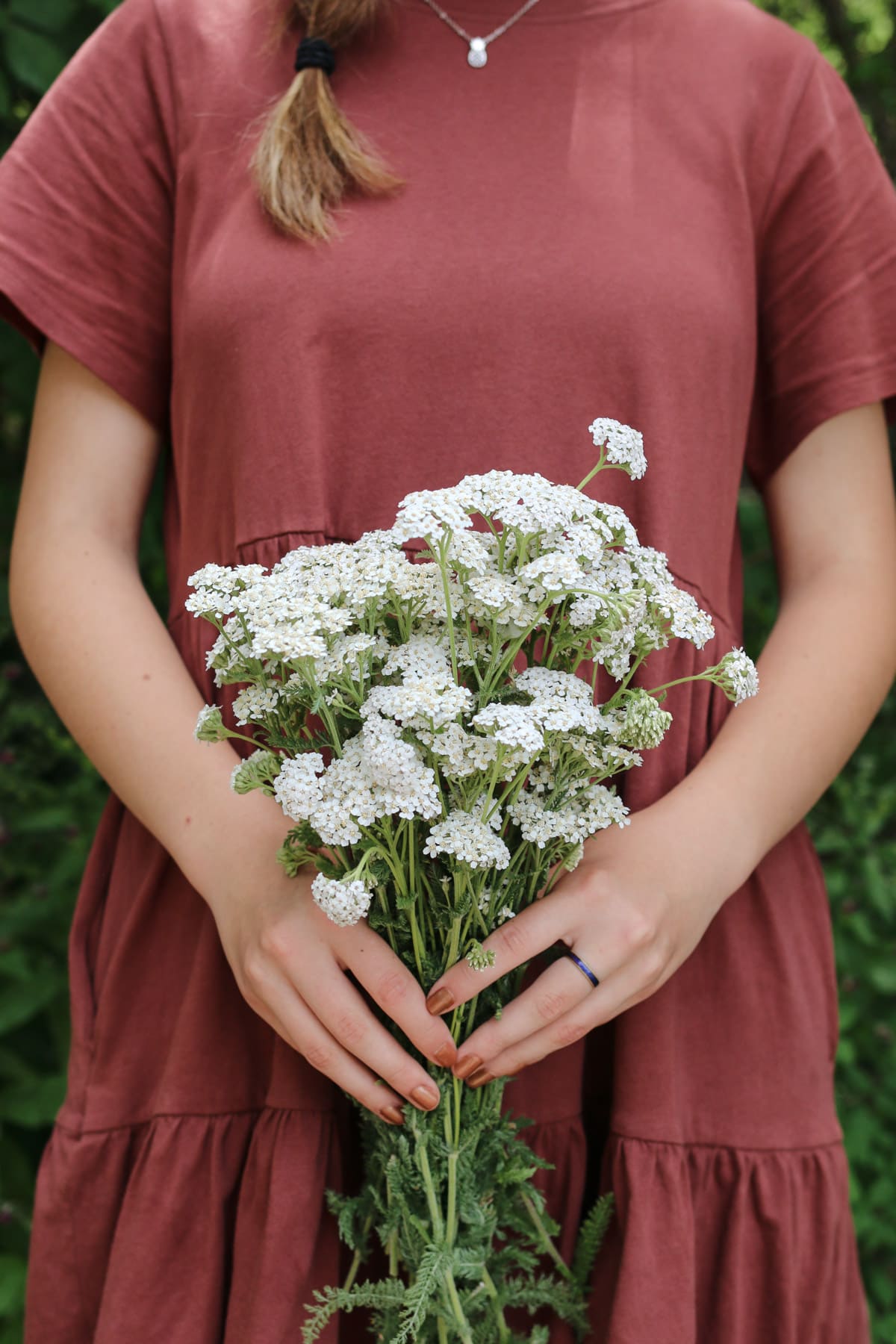
Table of contents
Please keep in mind that I am not a medical professional and can only offer personal advice. You should consult with your doctor about any medications or herbal remedies you may be interested in taking.
What is Yarrow?
Yarrow is the common name for a beautiful perennial plant that emerges in early spring and blooms in the summer. Yarrow’s scientific name is Achillea millefolium and it’s part of the Asteraceae plant family. You may have seen yarrow around. It’s hardy in zones 3-9 and often grows as a wildflower during warmer months. Yarrow plants are native to many parts of North America, Europe and Asia.
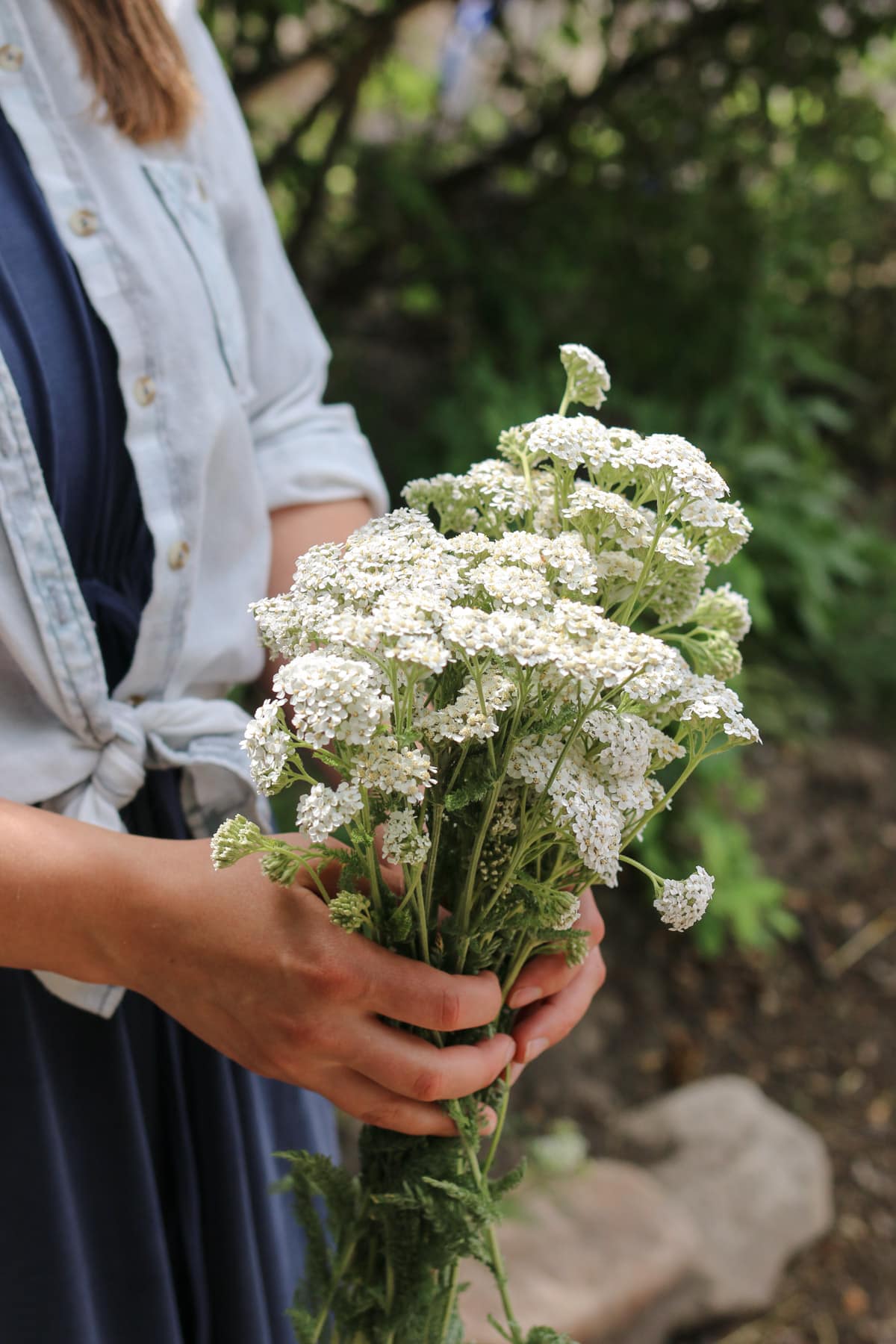
Yarrow Varieties
There are many different types of yarrow. Common yarrow tends to grow as a wildflower in meadows, fields, and on hillsides. These common yarrow plants often have small clusters of white flowers.
There are also domestic varieties of yarrow which have been bred to produce specific colors. Yarrow can be found with white, pink, yellow, lavender or even bright red flowers depending on the variety. Many people grow domestic yarrow as part of a flower or herb garden.
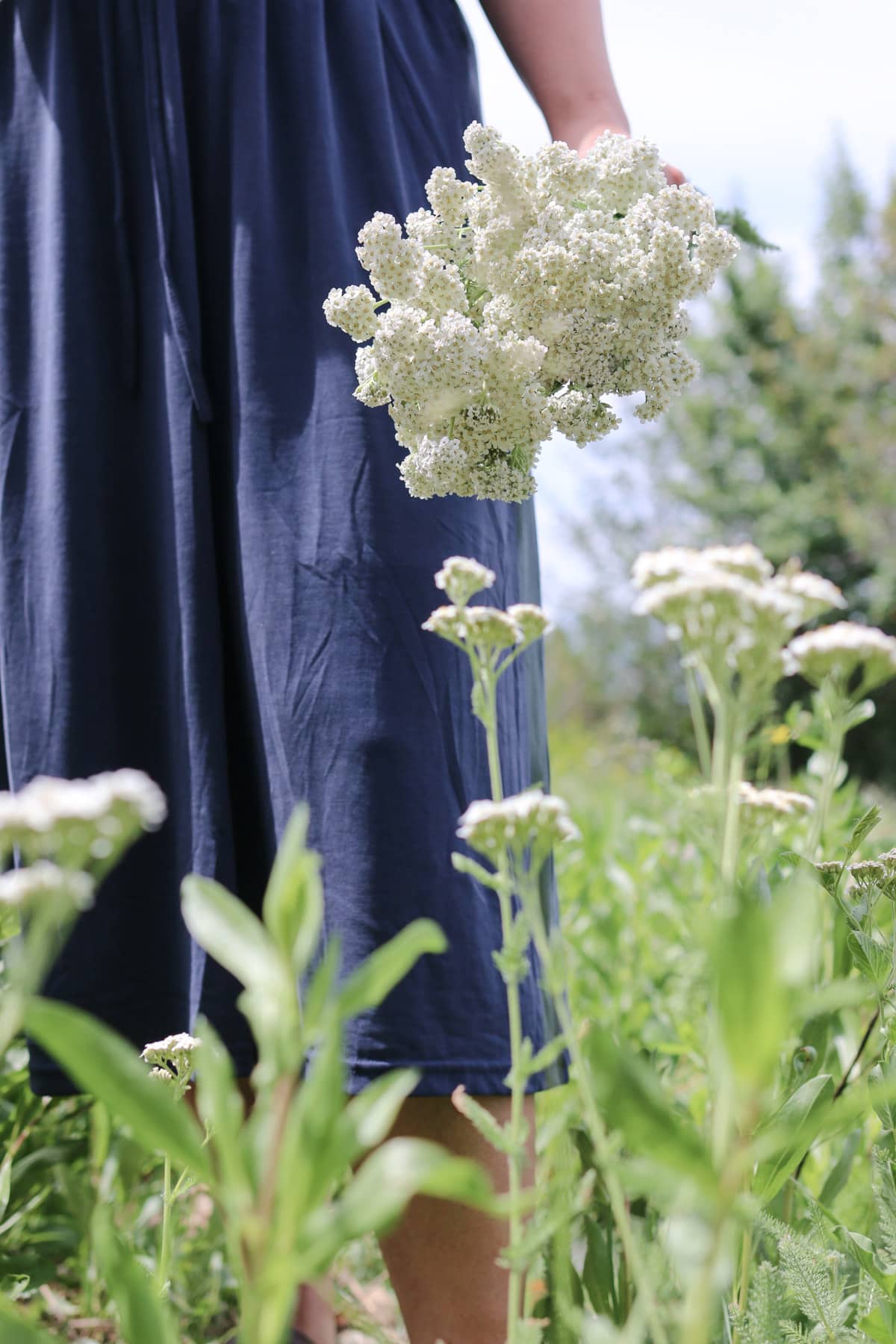
Yarrow makes a great addition to any home garden because it’s low-maintenance, drought tolerant and tends to not be bothered by pests. Yarrow likes well-drained soil, but it will also thrive in clay soil or other poor soil conditions. That’s my kind of plant!
History of Yarrow Use
The known history of yarrow plant use goes way back. We’re talking thousands of years. In fact, yarrow gets its scientific name Achillea millefolium from the ancient mythical tale of Achilles. In Greek mythology, Achilles uses yarrow to dress and heal his soldiers’ wounds on the battlefield during the Trojan war. Pretty cool, right?
But even outside of mythology, yarrow has a pretty impressive track record of medicinal use. In classical times yarrow was known as Herba militaris because of its ability to reduce bleeding from battlefield wounds. Yarrow has also been used throughout history to treat inflammation, calm digestive issues, bring down fevers and provide pain relief.
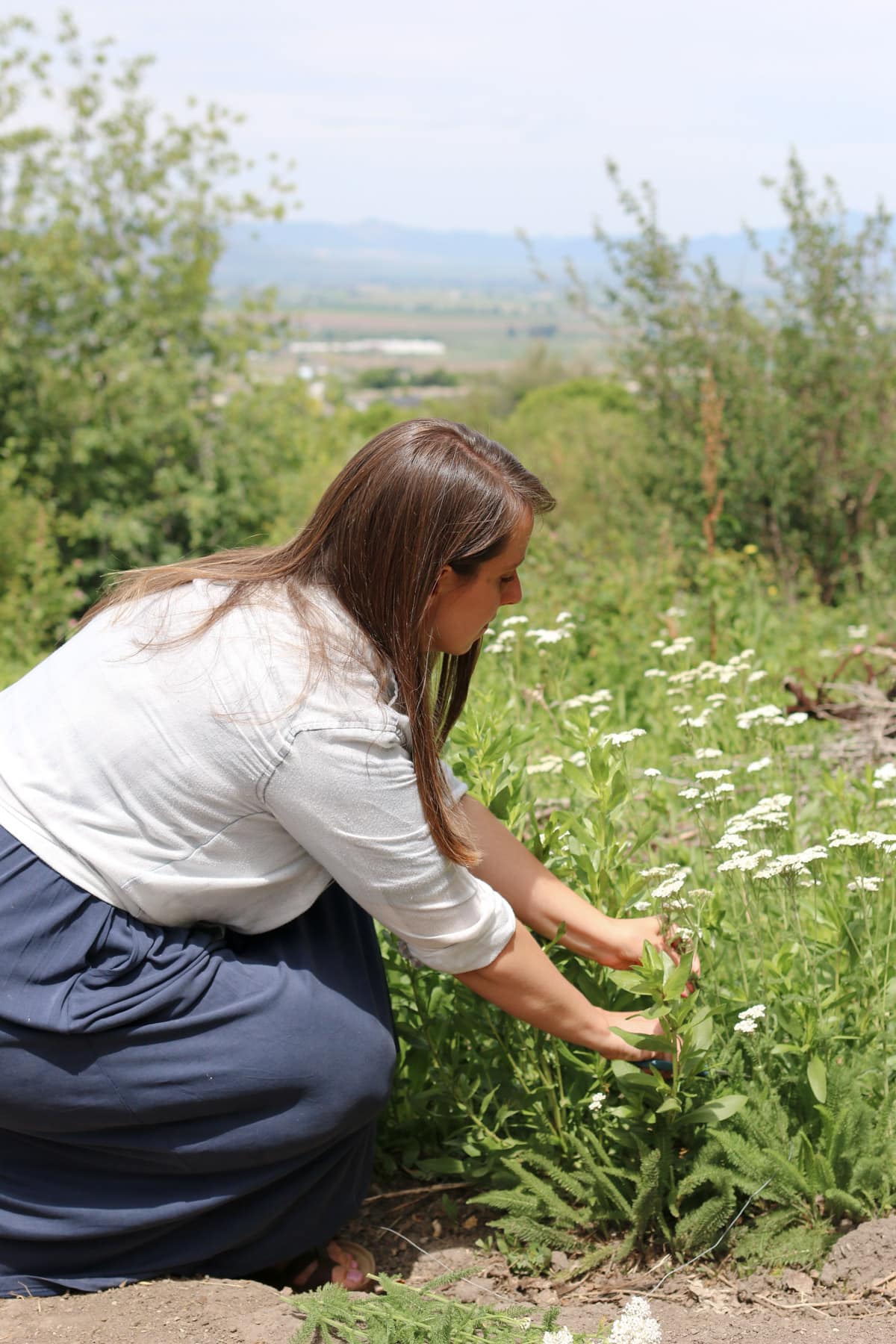
If you’re interested in learning more about the history of yarrow plant use, then jump over to Gardening Know How to read History of Yarrow – Learn About Yarrow Uses Throughout History. It’s fascinating stuff!
Health Benefits of Yarrow
Like I said earlier, yarrow plants have been used for medicinal purposes for thousands of years. And that’s not surprising, once you know all the benefits that yarrow has to offer. Let’s take a look at some of those awesome benefits!
Wound Healing
Yarrow can be useful for treating wounds. The yarrow plant contains antimicrobial and anti-inflammatory properties that can aid in proper wound healing. Yarrow also has astringent and clotting properties that can help reduce wound bleeding (and even stop nose bleeds)!
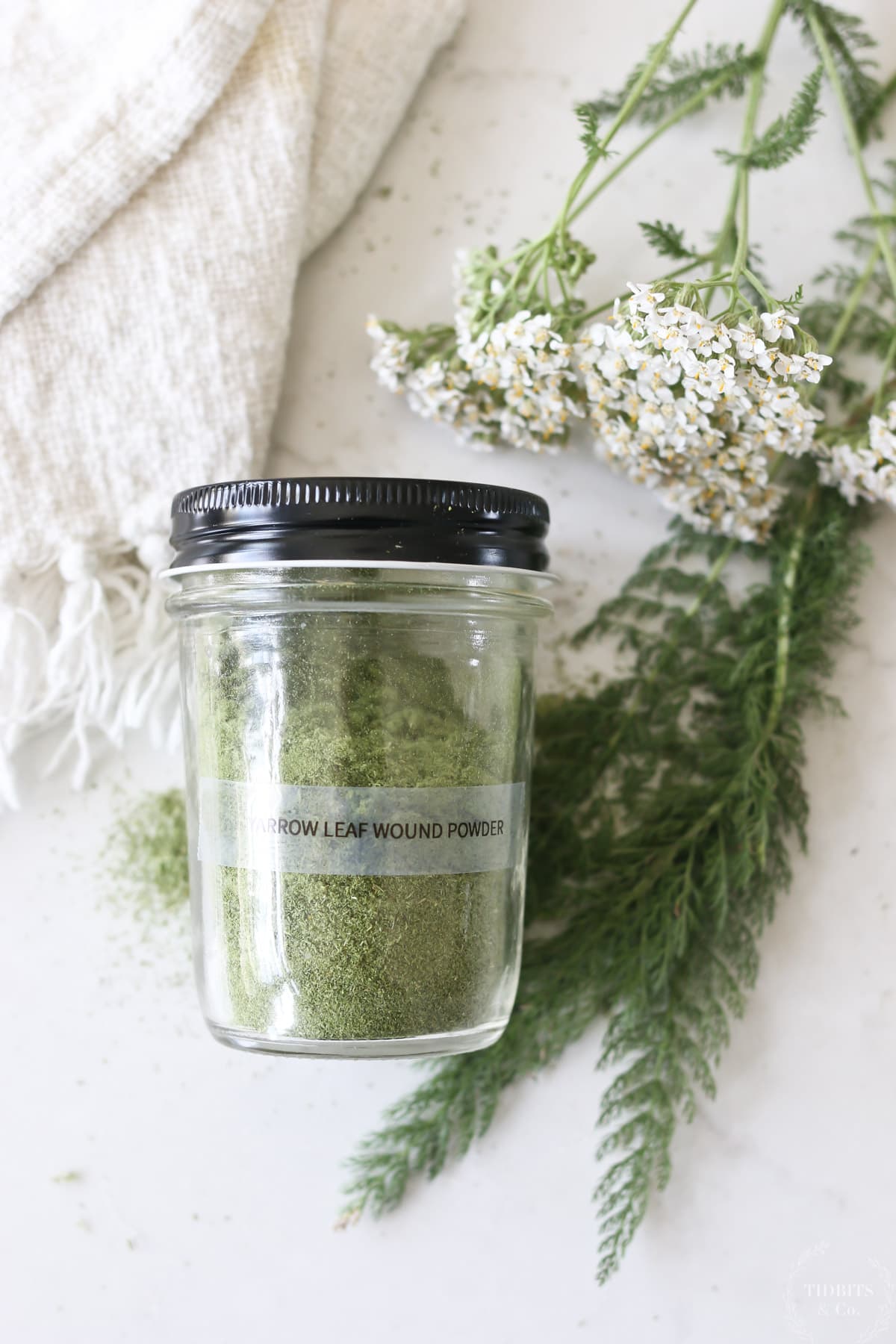
Cold and Flu Treatment
Did you know that yarrow can help ease cold and flu symptoms? Yarrow can help reduce fevers and ease upper respiratory congestion. It can also help relieve the pain associated with sore throats.
Skin Health
Yarrow is also great for promoting skin health. Yarrow’s antiseptic and anti-inflammatory properties can aid in the treatment of acne, eczema or psoriasis. It also contains astringent and toning properties that may help to improve skin texture and appearance.
Digestive Aid
If you need some help with bloating, gas or stomach cramps, you might want to look into yarrow. Yarrow can help relieve digestive inflammation and increase secretions in the digestive tract. This may lead to better digestion and a better feeling stomach.
Menstrual Relief
Menstrual relief is another exciting benefit of yarrow plants. Yarrow may help regulate menstrual cycles and provide menstrual pain relief. Who doesn’t love that? And it’s possible that yarrow may help balance female hormones as well.
Anti-Inflammation
Yarrow is known for having anti-inflammatory properties. As such, it may be helpful for a whole host of inflammation-related conditions. If you suffer from inflammation, you may want to consider adding yarrow to your wellness routine.
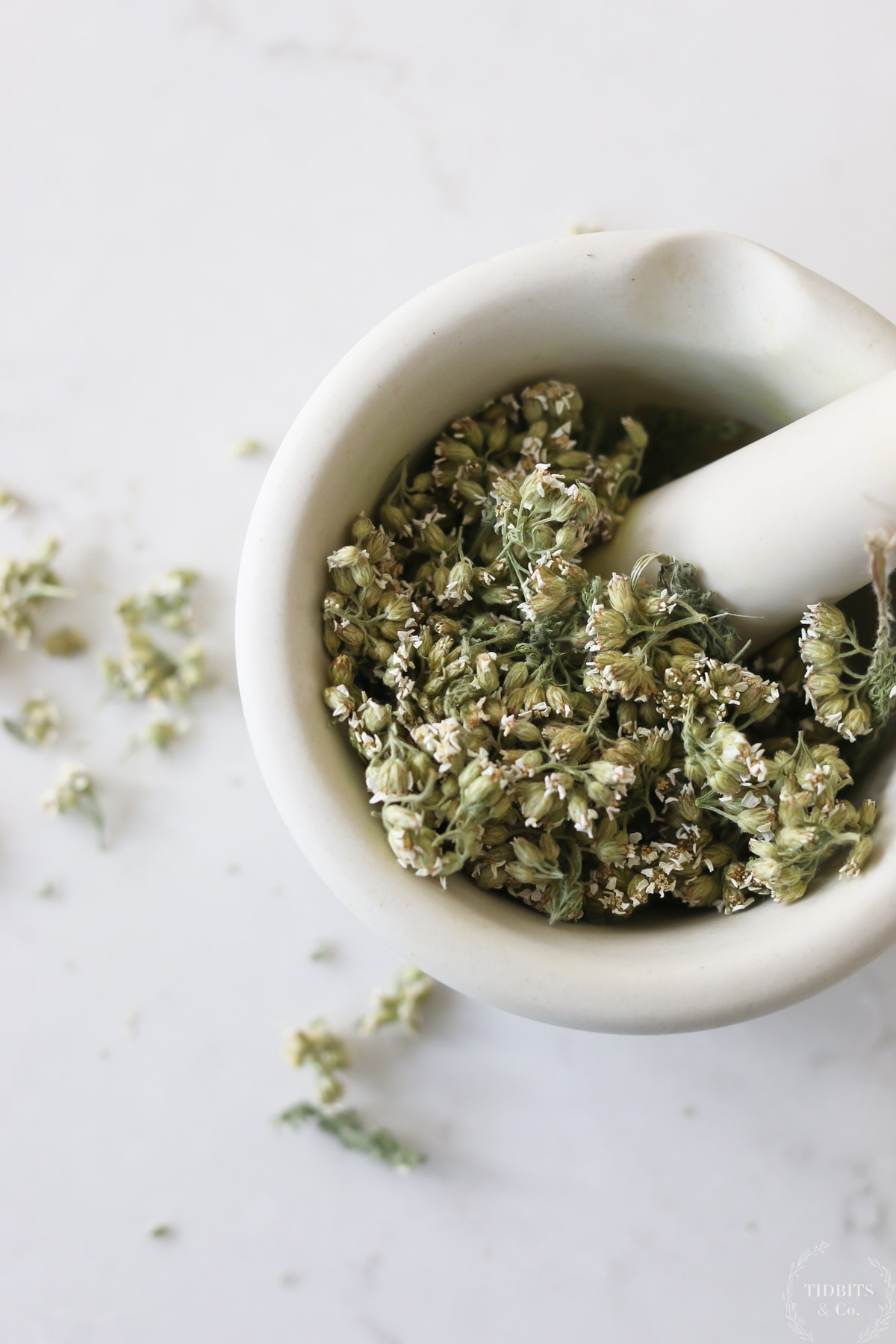
Immune Support
Remember those anti-inflammatory properties we talked about? Along with those properties, yarrow also contains antioxidants. Put those two things together and yarrow may give you some great immune-boosting benefits.
Urinary Tract Infection Treatment
One of the benefits of yarrow plants that interests me is its use as a possible urinary tract infection treatment. Yarrow is believed to act as a natural diuretic. This diuretic effect along with anti-inflammatory and antimicrobial properties means that yarrow plants may be helpful in treating urinary tract infections.
How to Use Yarrow
You can use yarrow in a number of ways. And best of all, the entire yarrow plant can be put to good use. Let’s take a look at how you can use each part of the yarrow plant.
Leaves
When you think about using herbs, do you picture the leaves? I know I do. And of course, yarrow leaves are useful. Yarrow leaves can be used to brew tea. They can also be used as a garnish or in salads. You can even try steaming yarrow leaves and inhaling their vapors to ease respiratory congestion.
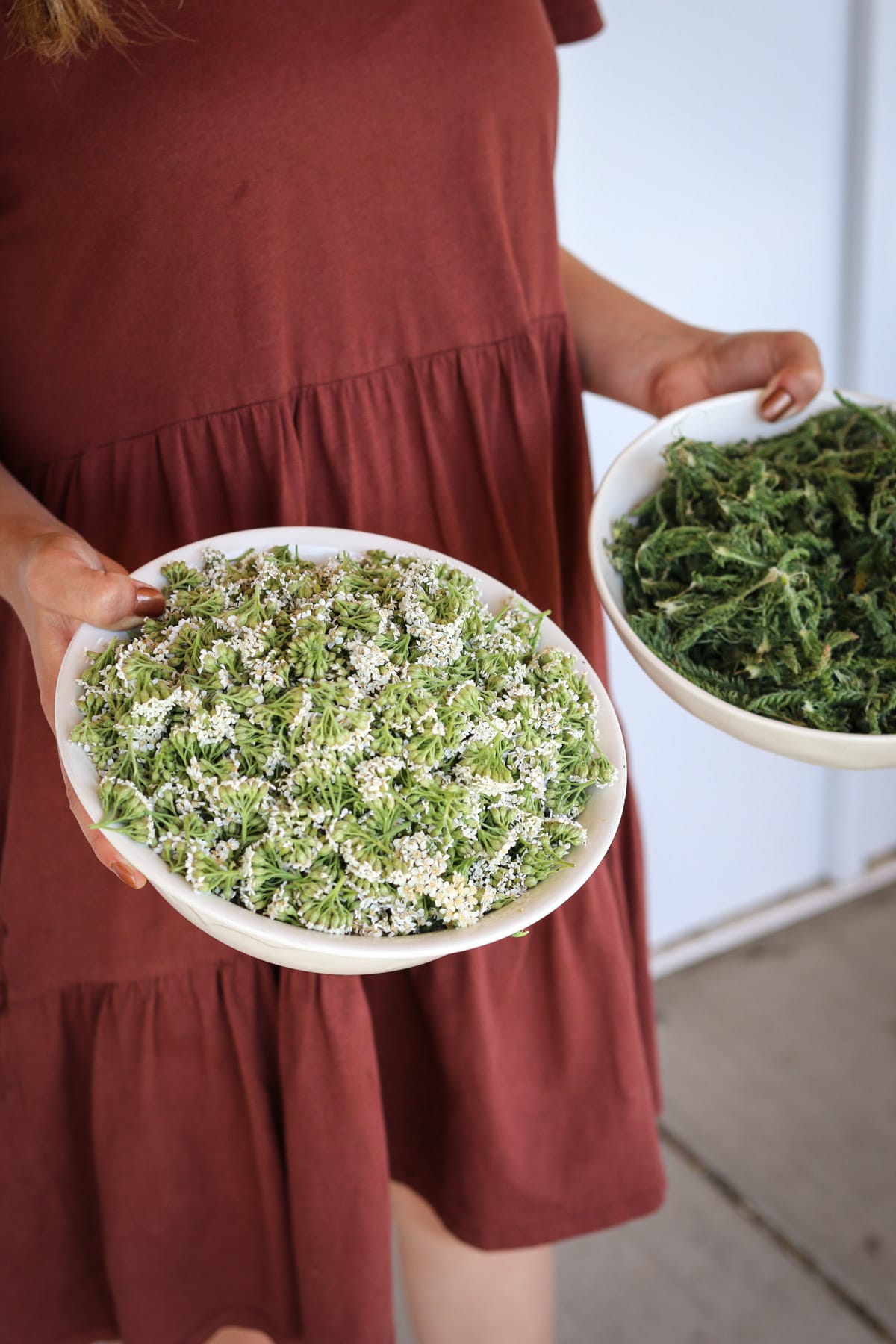
Of course, my favorite way to use yarrow leaves is as a poultice for wounds. Yarrow leaves can be ground into a paste that you apply to cuts and scrapes to reduce bleeding and promote healing. I’ve had great success using yarrow leaf on itchy bug bites as well.
Roots
Leaves aren’t the only useful part of the yarrow plant. You can use yarrow roots as well. Yarrow root extract can be used to make a yarrow tincture. It’s also possible to grind yarrow root into a poultice much like you would with yarrow leaves. The roots are well known for helping numb the mouth if you have a toothache.
Flowers
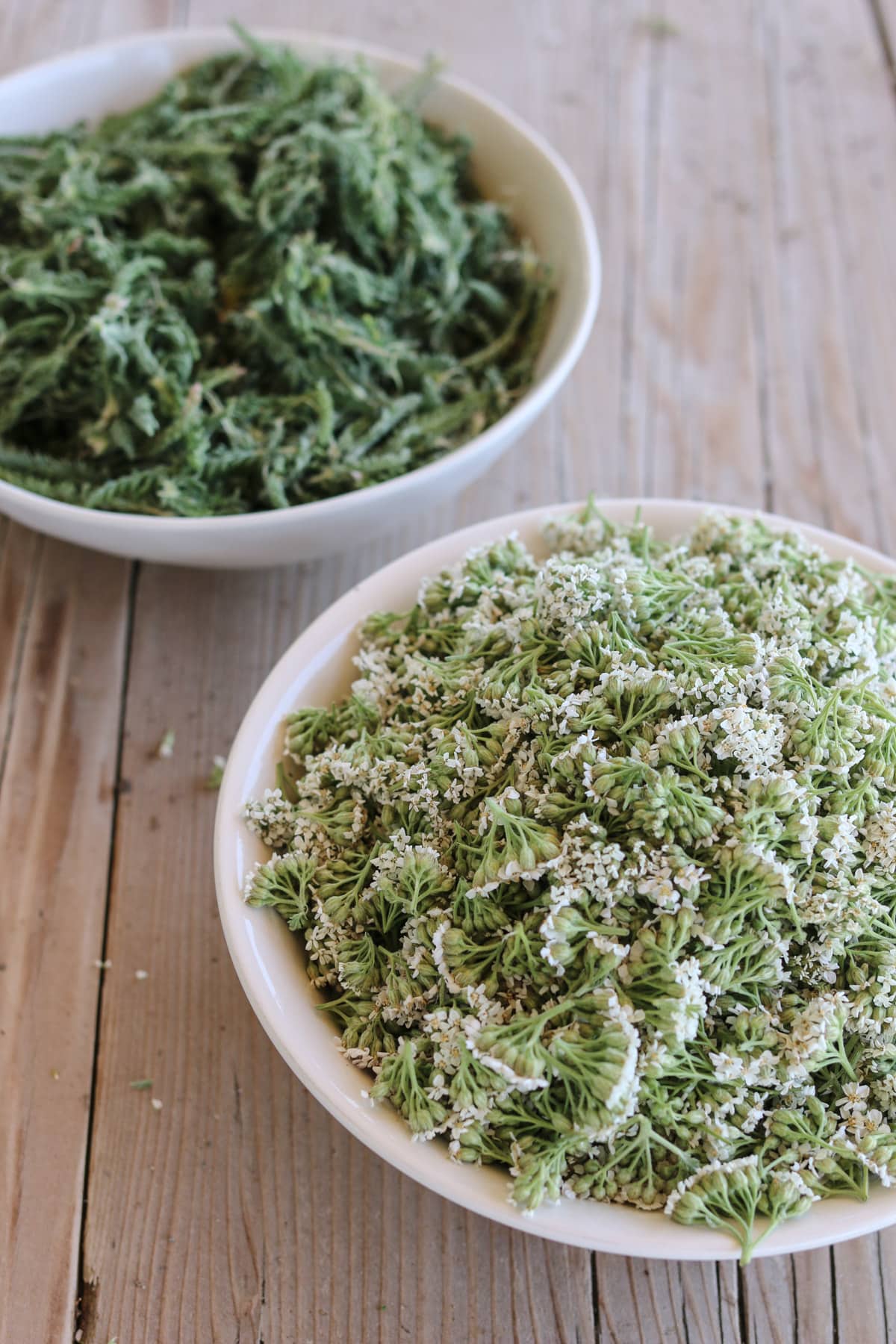
Let’s not forget about the flowers! Yarrow flowers are lovely. They are often used in flower arrangements or crafts. You can use yarrow flowers to make a healthy yarrow flower tea that is full of nutrients. You can also use yarrow flowers in body care products like oils and balms.
I’ve seen a lot of herbalists make tinctures with all parts to encompass the benefits of the entire plant in one.
Where to Find Yarrow
If you want to harvest yarrow, you’re in luck! Wild yarrow us usually easy to find. You’ll likely find these native plants growing in fields, meadows, hillsides, and roadsides. Yarrow prefers full sun locations, so look for it in sunny areas. You’ll recognize it by the clusters of small white flowers. It also has delicate fern-like green foliage.
If you’d prefer to grow your own yarrow, you should read Yarrow: How to Plant, Grow, and Care for Yarrow Plants from The Old Farmer’s Almanac for details. Yarrow plants are easy to grow and attract pollinators like bees and butterflies from early summer to late summer. It would make a great addition to your herb garden!
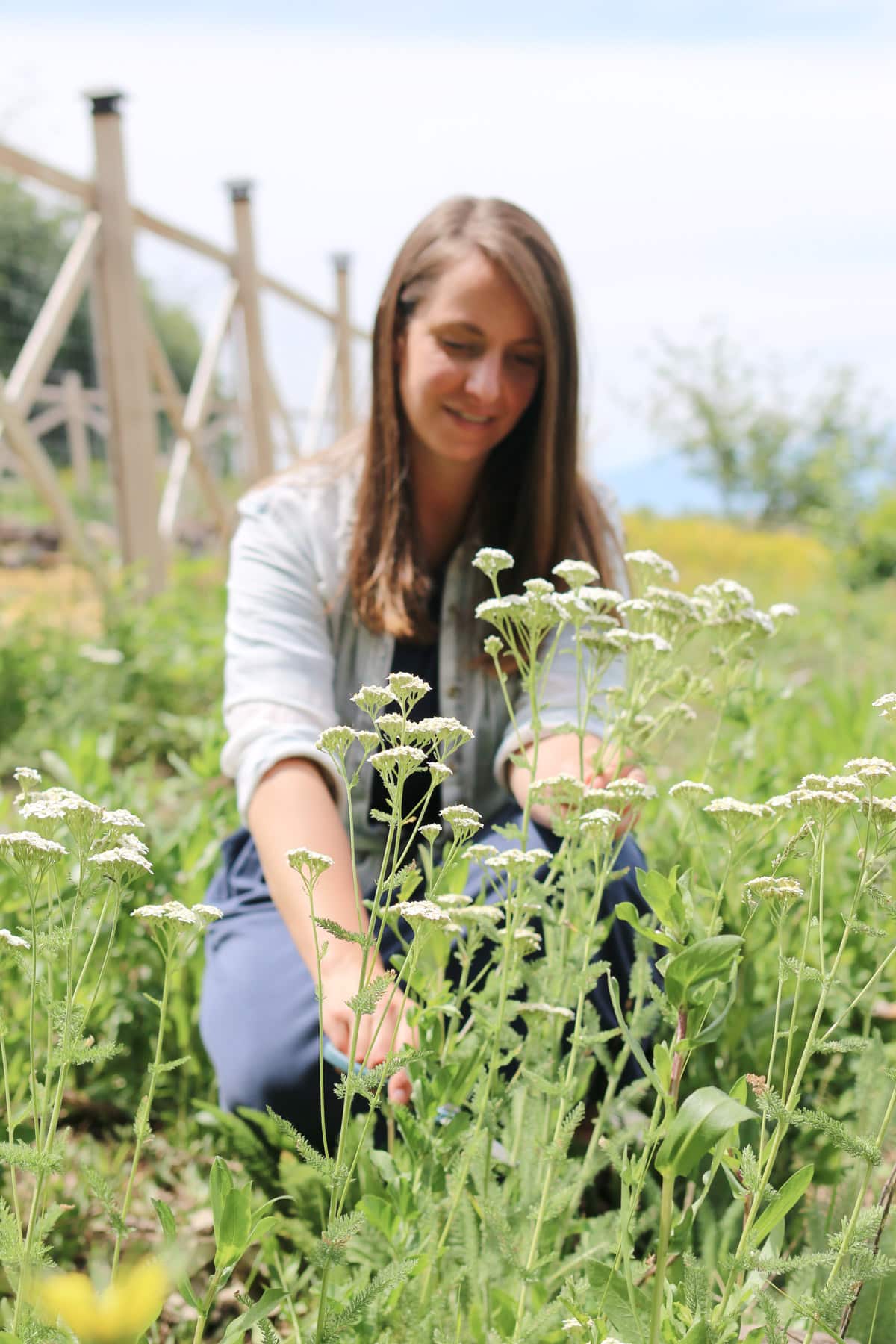
And of course, yarrow products are also available to purchase if you’d prefer not to grow or collect your own yarrow. Checkout Mountain Rose Herbs for a great variety of yarrow plant products including Yarrow Powder, Yarrow Herb, Yarrow Extract/Tincture, Yarrow Seeds, and a yarrow containing Urinary Care Extract/Tincture.
Precautions
It is important to take some precautions when using or harvesting yarrow. For instance, yarrow and poison hemlock bear a resemblance to each other. You would not want to confuse the two! Make sure you know what you are looking for if your harvest your own yarrow plants. This Poison Hemlock Identification and Yarrow Comparison from YouTube is a good one to watch so that you can learn how to properly identify yarrow.
Yarrow may stimulate uterine contractions, so you should avoid taking yarrow if you are pregnant or breast feeding. You’ll also want to check with your doctor about any medications you are currently taking as yarrow can interact with some blood thinning medications. You should also use with caution if you have allergies to other plants in the Asteraceae family, such as ragweed.
How to Harvest and Store Yarrow
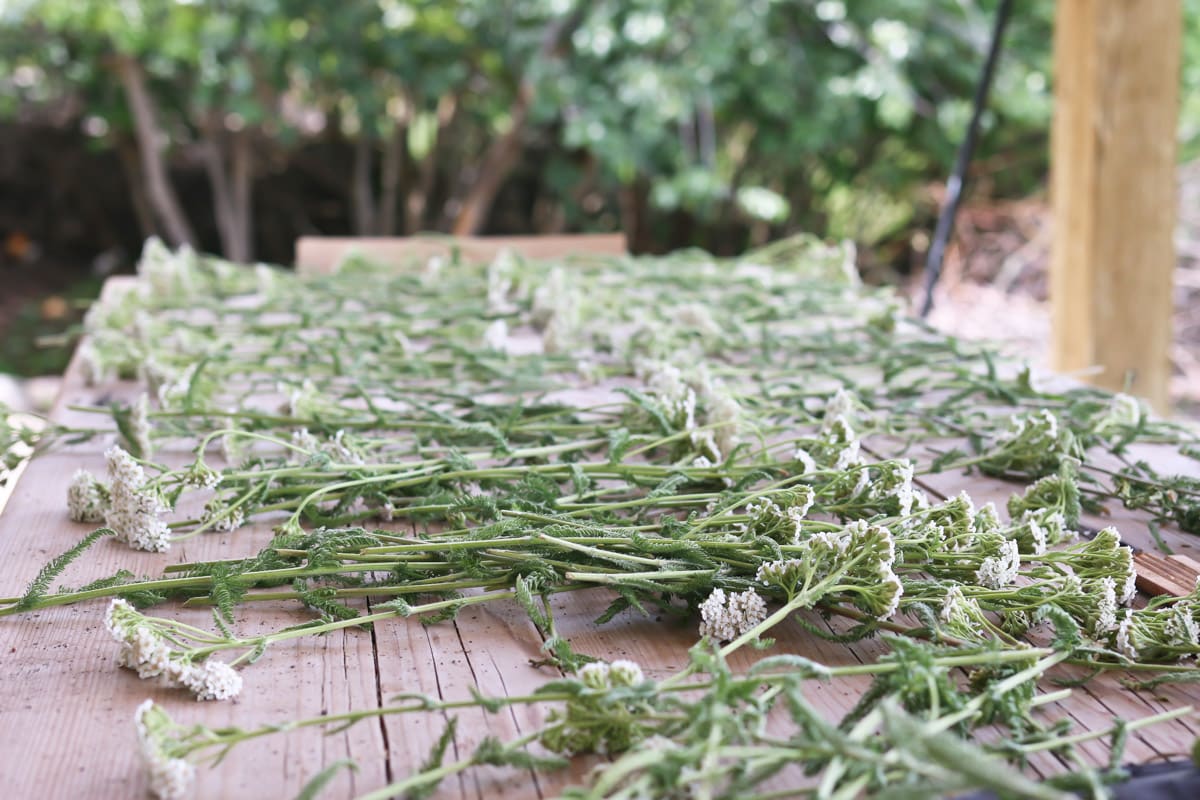
Now, let’s discuss how to harvest and store yarrow so that you can experience the benefits of yarrow for yourself. Please note that you should only harvest yarrow that you know has not been treated with pesticides or herbicides.
Try to harvest yarrow when its flowers are in full bloom. Once you’ve positively identified the yarrow plant, you can trim the plant stems back to within a few inches of the ground. If harvesting the entire yarrow plant, carefully dig around and under the plant to loosen the roots and lift from the ground. Try not to harvest too much in any one area so that the yarrow can regrow.
Next, lay your harvested yarrow out a table to dry for a while. This gives any insects a chance to crawl out. Rinsing yarrow isn’t recommended due to how delicate the flowers are. After laying the flowers out for a while, separate the flower heads from the leaves and allow them to finish drying completely. I like to use this hanging herb dryer for my yarrow.
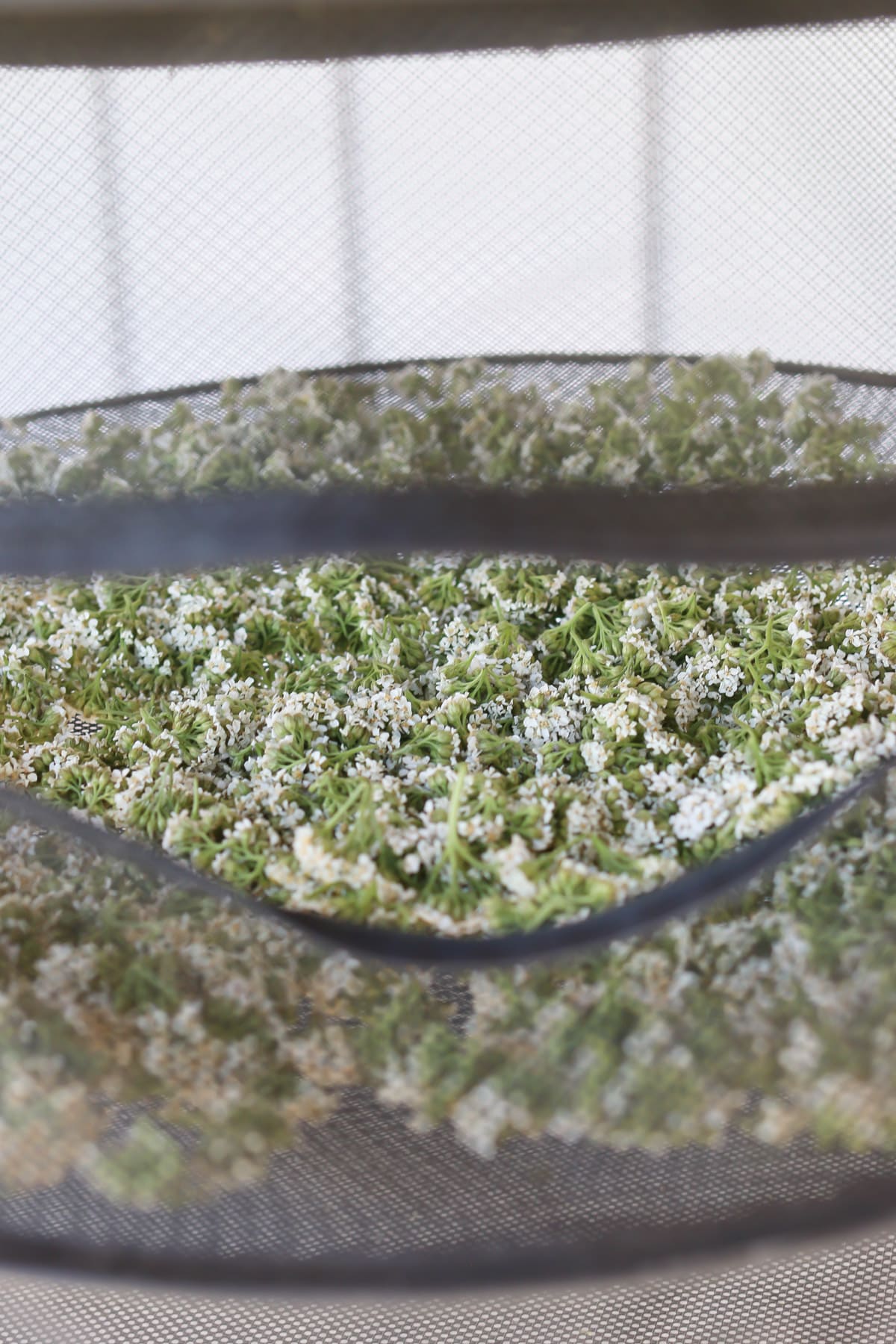
Once your yarrow is completely dry, you can store it in jars for all your future projects. Think teas, salves, tinctures and poultices. You can do so many things with yarrow!
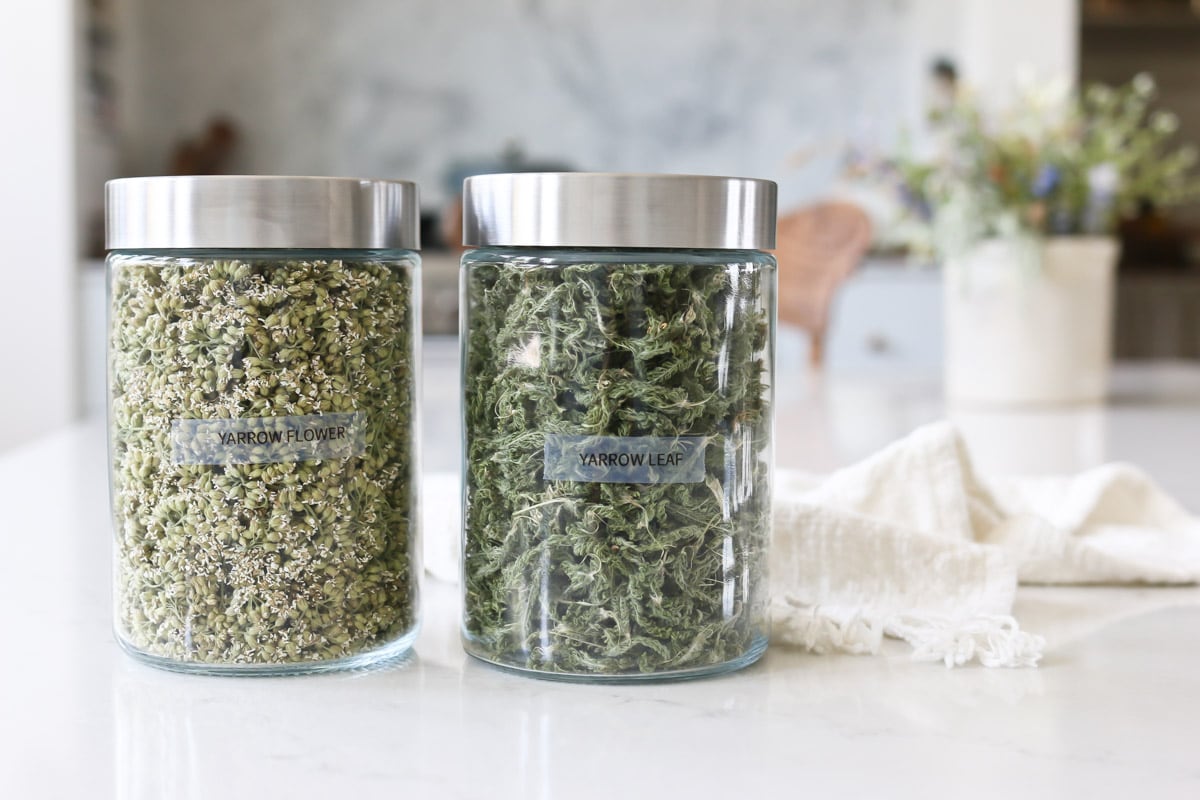
Yarrow can also be used fresh. Drying is only necessary if you are saving the yarrow for future uses. Store your yarrow in a cool dark place. And you’re done!
Learn More About Herbs
Thank you for taking the time to be here today! I hope you enjoyed learning about the benefits of yarrow plants. I have several other articles about herbs that you may also be interested in. Take a look at:
- Dandelion Root Benefits – Nature’s Secret Remedy
- How to Make a Nourishing Roasted Dandelion Root Tea
- How to Harvest Dandelions
- Make Your Own Chive Blossom Vinegar
- DIY Dry Shampoo – With an Ingredient that Might Surprise You
- Natural Cold and Flu Remedies that You Can Make at Home with Herbs
Until next time, my friends!
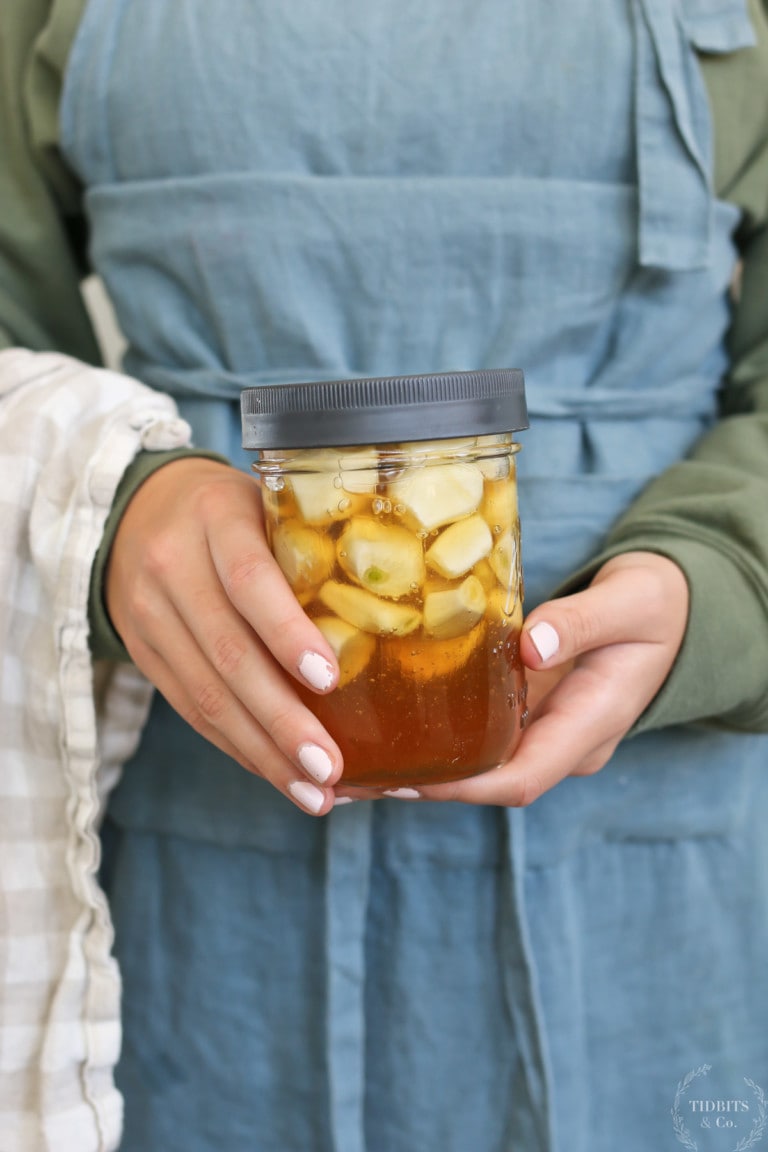
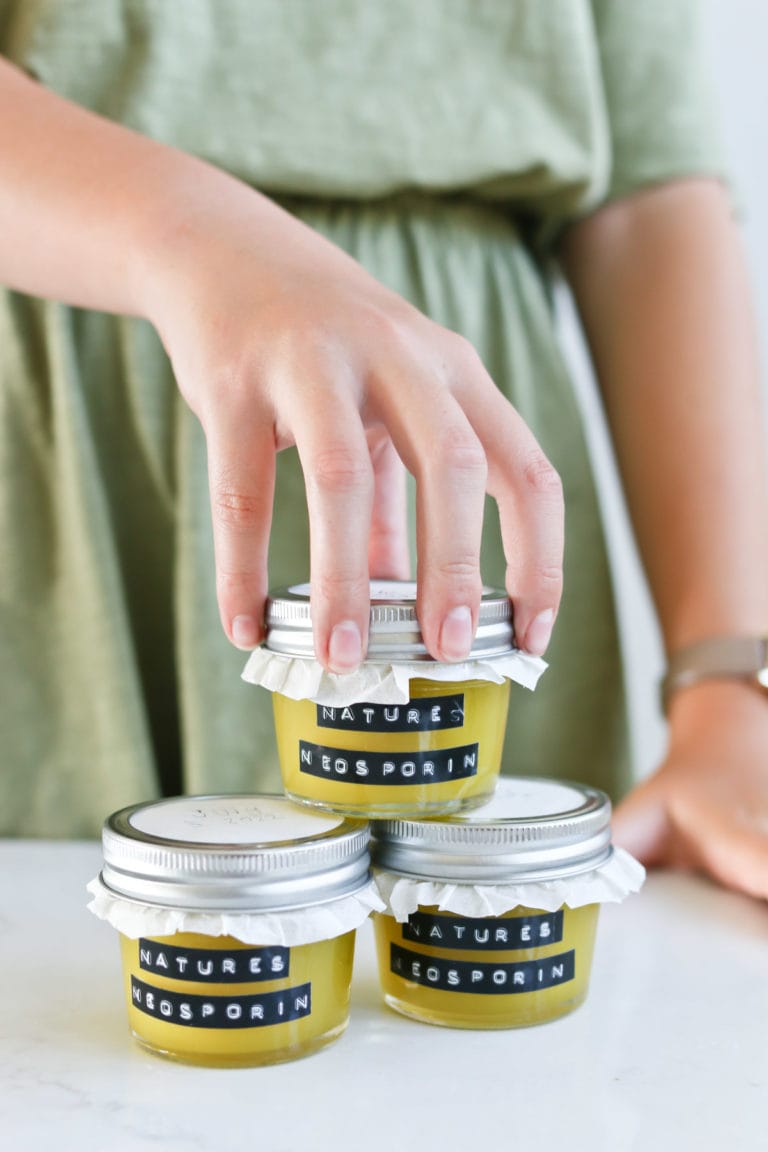

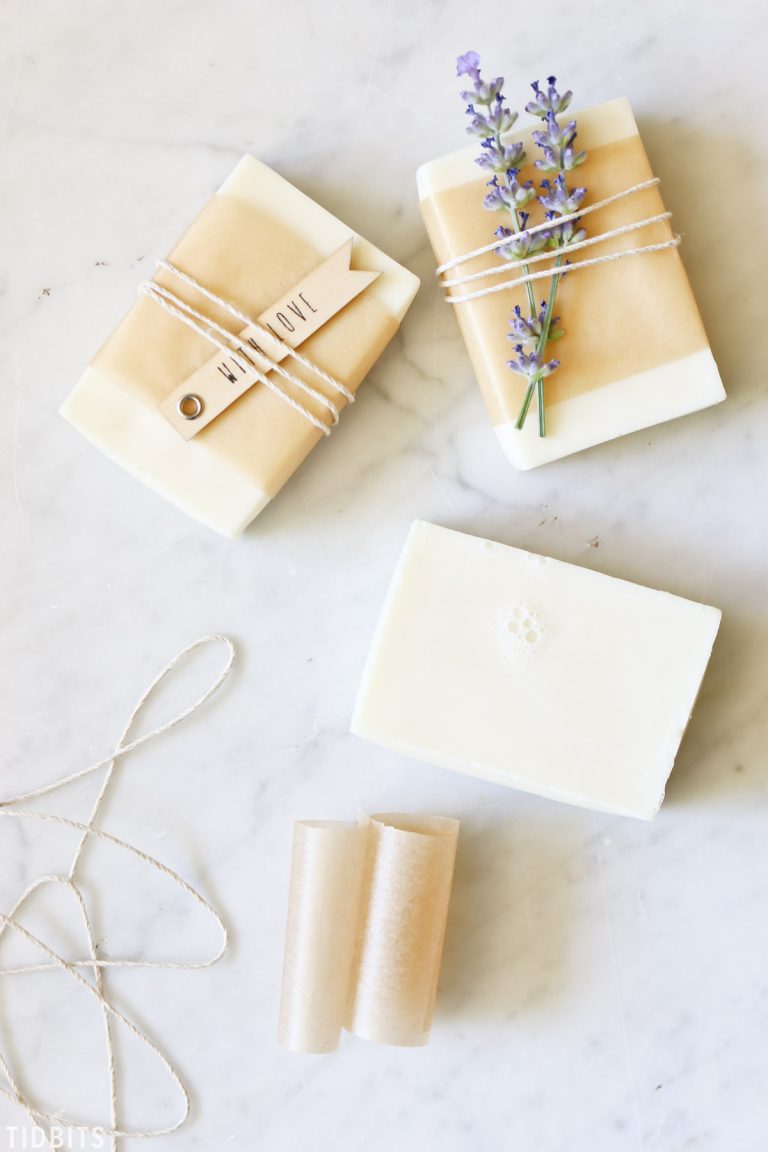

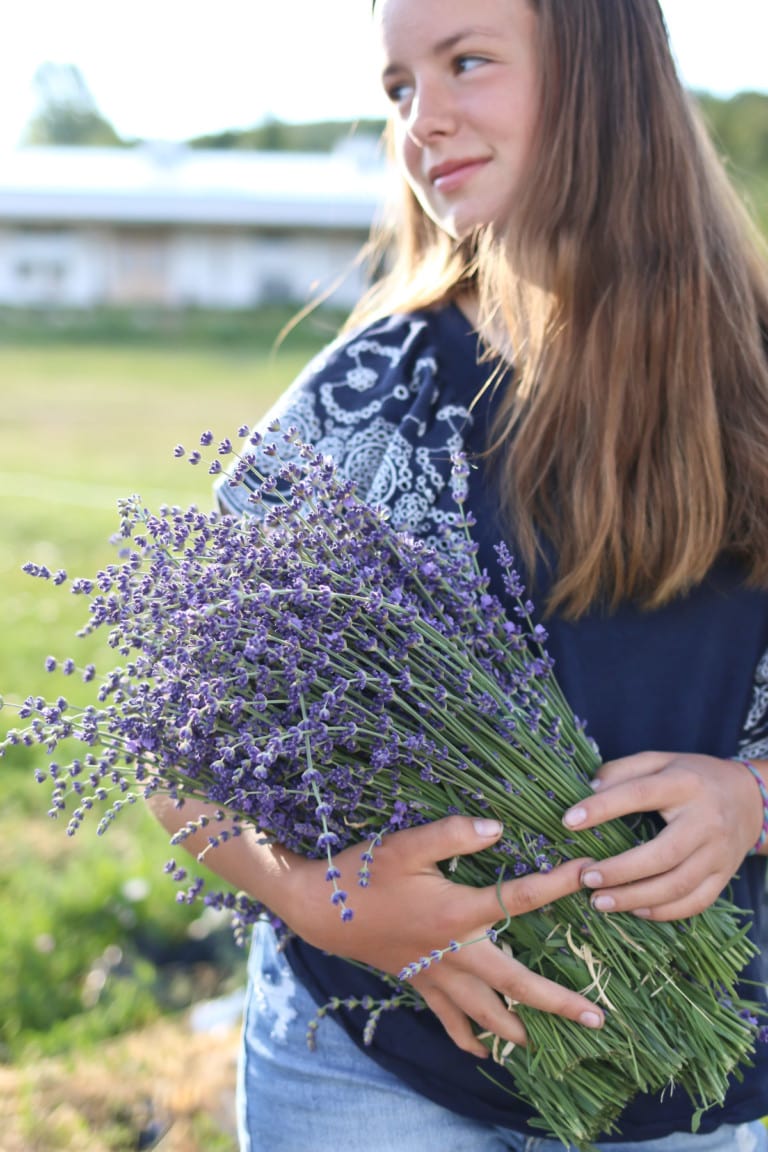







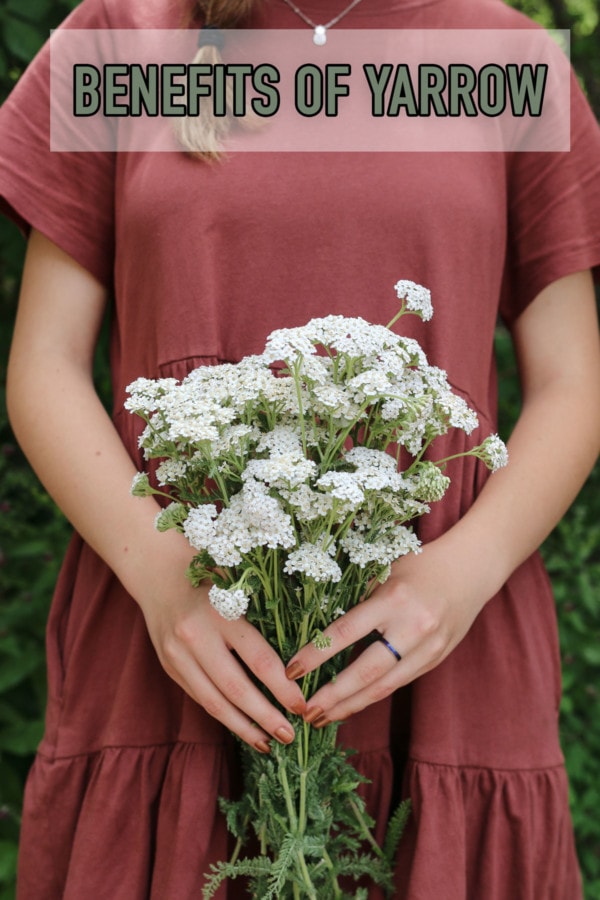
This was very informative. Thank you for sharing!
Do you know if the bright pink yarrow can be used for medicinal purposes, or is it just the white?
I’ve read that is definitely can, but the white has more of the medicinal properties. But it is better than nothing if that is what you have! The pinks are so lovely!! I think I want to plant some.